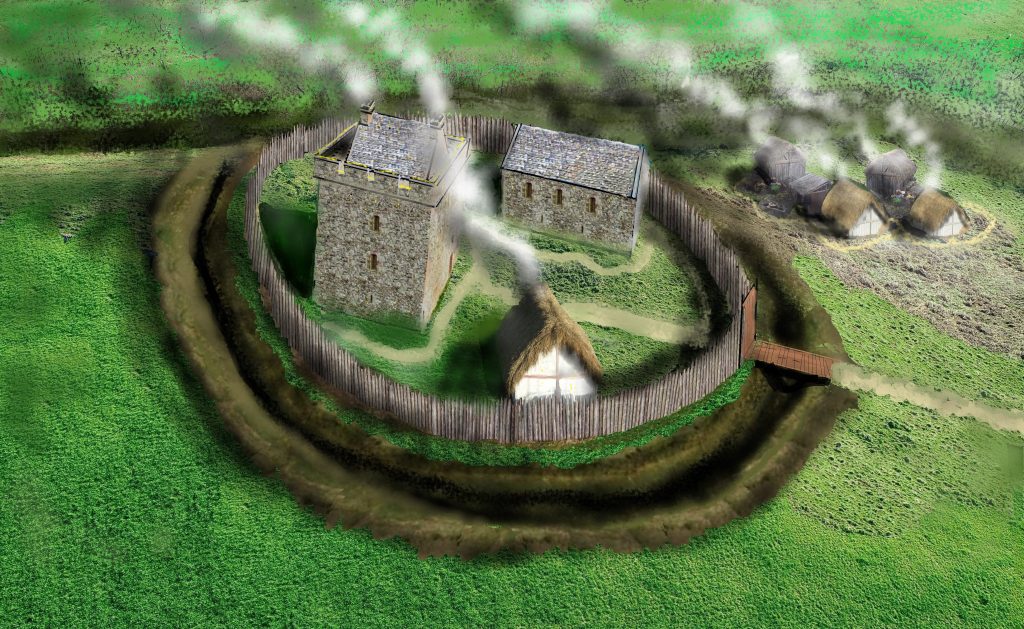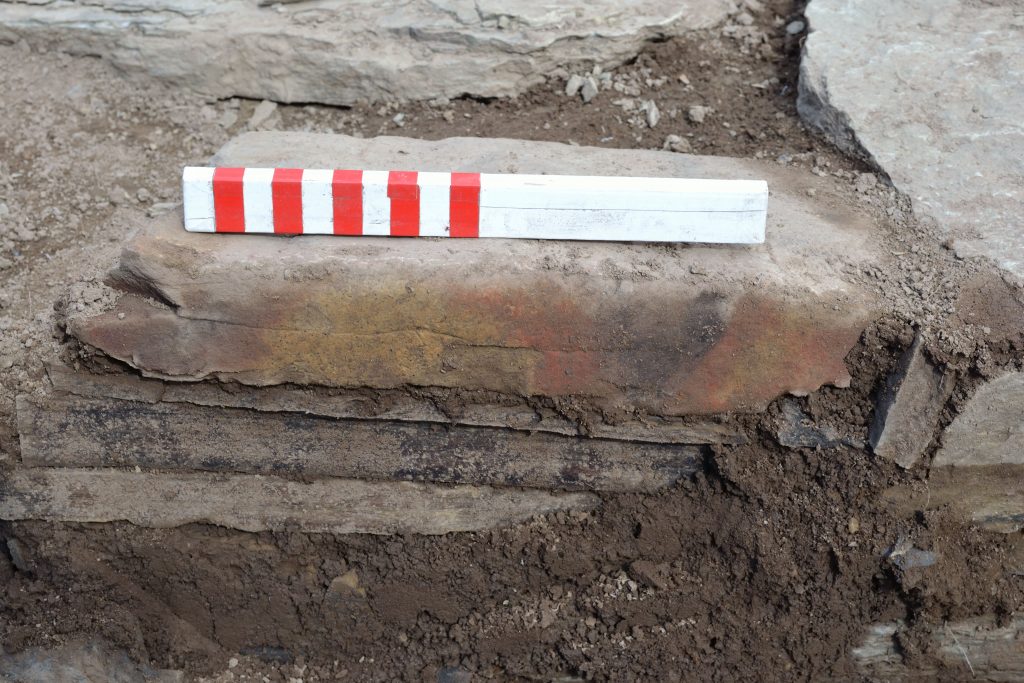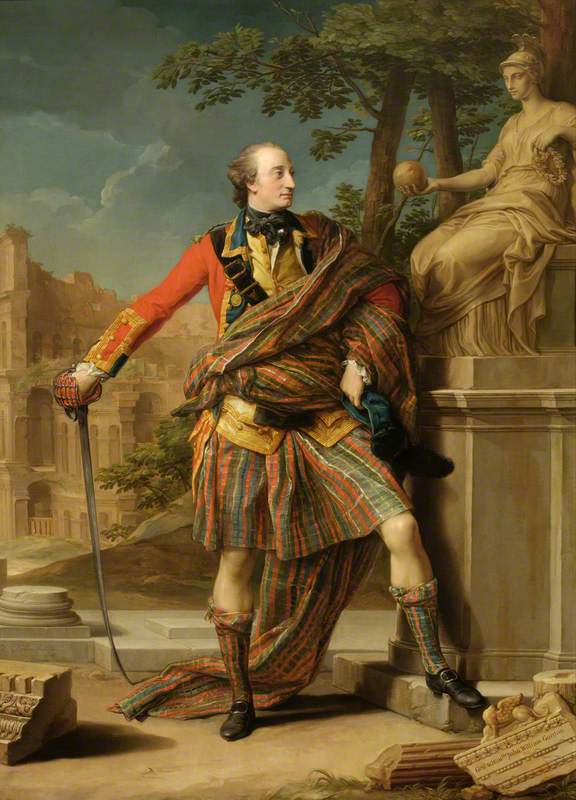
‘The Community of the Twelve Towers of Rule’ project has been awarded funding from the Society of Antiquaries of Scotland to continue investigating the people who once lived in the Borders valley – including at Bedrule Castle – which was devastated by Henry VIII’s army in 1545 (Reconstruction by Andrew Spratt)
The Society of Antiquaries of Scotland announced today that it has awarded funding to 15 archaeological and historical projects committed to researching stories from Scottish history.
A total of £26,251.00 will be distributed by the Society to investigate Scottish rock art across the country, a devastated late-medieval Borders community, the lives of 18th-century Scots intellectuals in Rome, and more.
The ‘Colouring the Neolithic: searching for pigments in Scotland’s prehistoric rock art’ project will seek to “revolutionise our understanding” of prehistoric Scotland by searching for evidence that Neolithic rock art was not always plain stone. The researchers were inspired by the evidence of colour on structures and artefacts in Orkney, and examples of paintings over carvings in sites on the continent, which made them think that perhaps we can also find this combination of techniques in Scotland. Dr Joana Valdez-Tullett FSAScot, Prehistorian, Rock Art Specialist and Technical Specialist at Wessex Archaeology, and Dr Louisa Campbell FSAScot, Lord Kelvin Adam Smith Leadership Fellow in Archaeology at the University of Glasgow, will use rock art examples housed in Scottish museums to develop a pioneering approach to search for these 5,000-year-old traces.

Thanks to a grant from the Society of Antiquaries of Scotland, the innovative project will investigate decorated stones similar to this one from Ness of Brodgar in Orkney, and could provide dating evidence for a range of monuments from across prehistoric Scotland (© Ness of Brodgar Trust / ORCA)
The ‘Community of the Twelve Towers of Rule’ project, led by Professor Jane Bower FSAScot, Chair of the Campaign for a Scottish Borders National Park, aims to piece together the story of a late-medieval Borders community devastated by English forces almost 500 years ago. In 1545, King Henry VIII dispatched an army to lay waste to the Valley of Rule Water and the people that lived there. Thanks to a grant from the Society of Antiquaries of Scotland, together with funding from Scottish Borders Council and the Campaign for a Scottish Borders National Park, the project will bring together dispersed and limited archival records to create a fuller understanding of the economy, society and culture of the valley of the Rule right up to the time it was destroyed.

Thanks to funding from the Society of Antiquaries of Scotland, Dr Marion Amblard will uncover the lives of 18th-century Scots living in Rome using records in the National Library of Scotland, the National Records of Scotland, and the National Galleries of Scotland in Edinburgh (By Pompeo Batoni (1708–1787), courtesy of National Trust for Scotland, Fyvie Castle)
Dr Marion Amblard FSAScot, Senior Lecturer in Scottish and British studies at Grenoble Alpes University, will also investigate the Scottish community who lived in Rome between 1719 and 1798. This community was made up of political exiles, artists, antiquarians, art dealers, travellers and young men attending the Scots College. The project entitled ‘Scots in 18th-century Rome: Key actors in the cultural, artistic and diplomatic life of the Eternal City’ will shed light on the influence the Scots in 18th-century Rome had on the cultural, artistic, social and diplomatic life in Scotland and in the Italian capital. It will also show that the Scottish experience of Rome was different from that of the English and contributed to help the Scots forge a multifaceted identity, being Scottish, British and European.
Additional Society of Antiquaries of Scotland grants have been awarded to projects which will investigate traces of the earliest human populations on the Isle of Skye, horse name elements in the landscape and language of Galloway, and to students in the Scottish Archaeological Forum who are coordinating a new conference on 28-29 October in Aberdeen which will highlight efforts to address the under-representation of marginalised groups within archaeology.
The Society supports high-quality research and publication relating to Scotland’s past by making several grants and awards each year. Previous grants have funded geophysical surveys of Roman forts on the Antonine Wall, radiocarbon dating a harp said to have been owned by Mary Queen of Scots, archival research into the life of a working-class Lanarkshire lad who became a secret WWII Soviet spy, and more.
Dr Suzanne Lyle FSAScot, Vice President of the Society of Antiquaries of Scotland and Convenor of the Grants and Awards Committee, said:
“Thanks to support from our Fellows, each year we are delighted to offer funding to a number of researchers at different stages in their careers. The projects selected in 2023 demonstrate the high calibre and varied nature of research into Scottish history currently taking place across the globe, all of which will contribute to our understanding of Scotland’s past.”
Dr Simon Gilmour FSAScot, Director of the Society of Antiquaries of Scotland, said:
“Once again I am thrilled by the breadth depth of research into Scottish history in the applications for our grants and awards. As a learned Society, we are proud to spend our charitable funds, supported by our Fellows, to the advancement of understanding Scotland’s past, whether the stories lie below ground, in archives or in oral testimony.”
The Society of Antiquaries of Scotland grants are open to everyone and the next deadline is 30 November. See the full list of 2023 awardees below.
Help us: champion research; stimulate discussion; enhance public understanding; and share our extraordinary heritage. Donate directly to the Society now.